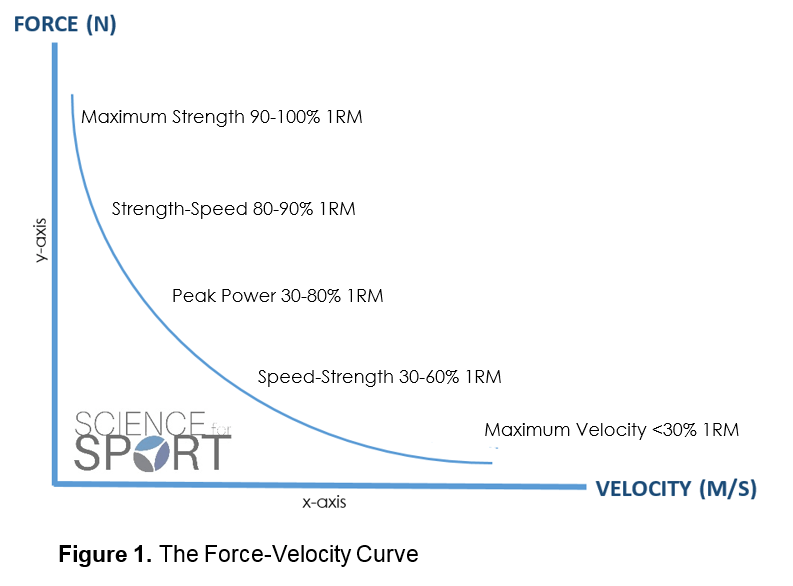In my latest post focusing on training smart, I talked about using the minimum effective dose for maximal returns. I highlighted the need to prioritise your training so exercise selection and not waste time and energy. Understanding the force velocity curve is essential when it comes to exercise selection and planning workouts.
The Force Velocity Curve
While the curve may seem confusing at first, it is actually quite a simple concept. The curve represents the inverse relationship between force and velocity. To keep things simple, the faster a movement occurs, the lower there amount of force produced. Therefore, an increase in force would result in a decrease in velocity. For example, a 1 rep max back squat is going to see huge amounts of force but will be relatively slow. In contrast, repeated box jumps will be much faster but produce less force.
Example of data show in research look a little like this:
- Back Squat @90% 1RM
- Peak Force 2578 (N)
- Peak Velocity 0.86 (m/s)
- Back Squat at 30% 1RM
- Peak Force 2166 (N)
- Peak Velocity 1.66 (m.s)
What This Means For Training
You can see in the curve that various zones have been set out. These show what kind of properties you are improving when working at different points of the curve. Generally speaking, a large amount of training within the gym has the goal of improving power. Because of this you could see improvements from slowly working on velocity and visa versa. However, failure to train across the full width of the curve can leave you with big holes in your game.
Ensuring you have a strong foundation across all the zones is essential for sports performance. From here you can then look to prioritise which areas you are weakest and where you can really excel within your sport.
Final Thoughts As A Personal Trainer
As a Personal Trainer in Twickenham, London, clients often come to me with an idea of what they want to improve. After a little digging, we often find that certain areas of the force velocity curve and their relationship are severely lacking. Establishing what, where and when to attack each element can really take your performance to the next level.
